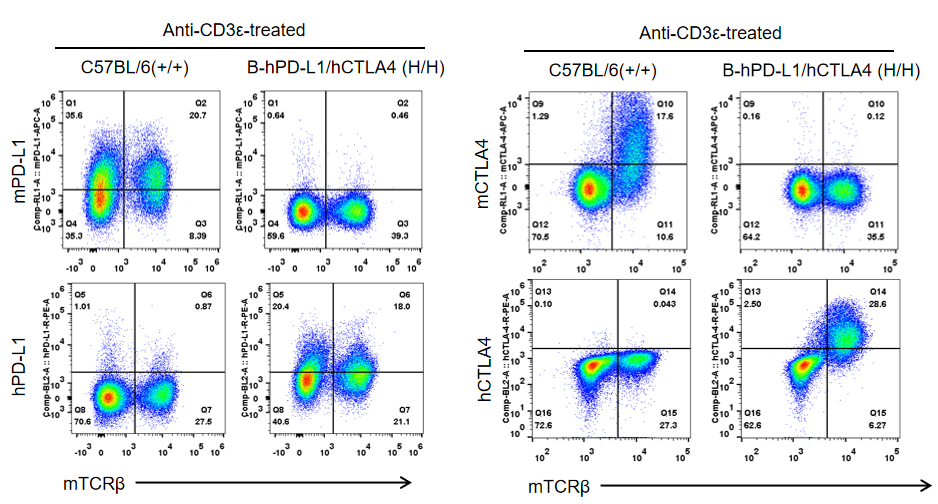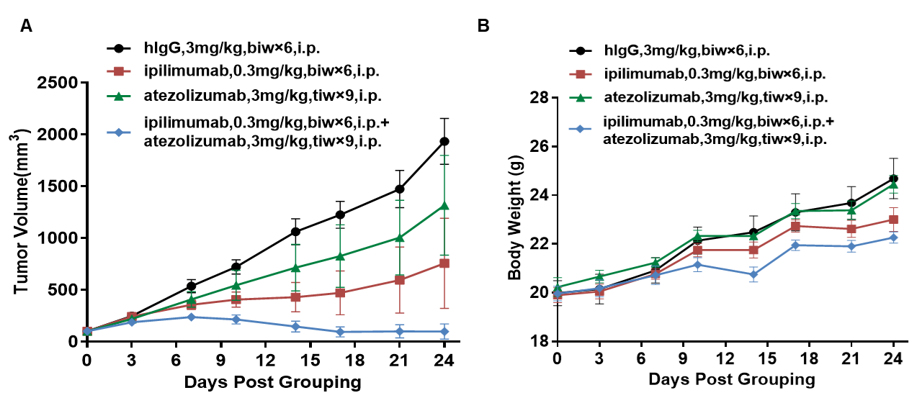| Strain Name |
C57BL/6-Cd274tm1(CD274)Bcgen Ctla4tm1(CTLA4)Bcgen/Bcgen
|
Common Name | B-hPD-L1/hCTLA4 mice |
| Background | C57BL/6 | Catalog number | 120538 |
|
Related Genes |
CD274(CD274 antigen) CTLA4 (Cytotoxic T-lymphocyte-associated protein 4,CD152) |
||
|
NCBI Gene ID |
60533,12477 | ||
Protein expression analysis

Strain specific PD-L1 and CTLA4 expression analysis in homozygous B-hPD-L1/hCTLA4 mice by flow cytometry.
Splenocytes were collected from WT and homozygous B-hPD-L1/hCTLA4 (H/H) mice stimulated with anti-CD3ε in vivo, and analyzed by flow cytometry with species-specific anti-PD-L1 and anti-CTLA4 antibody. Mouse PD-L1 and CTLA4 were detectable in WT mice. Human PD-L1 and CTLA4 were exclusively detectable in homozygous B-hPD-L1/hCTLA4 but not WT mice.
Combination therapy of anti-human PD-L1 antibody and anti-human CTLA4 antibody

Antitumor activity of anti-human PD-L1 antibody combined with anti-human CTLA4 antibody in B-hPD-L1/hCTLA4 mice.
(A) Anti-human PD-L1 antibody combined with anti-human CTLA4 antibody inhibited MC38-hPD-L1 tumor growth in B-hPD-L1/hCTLA4 mice. Murine colon cancer MC38-hPD-L1 cells were subcutaneously implanted into homozygous B-hPD-L1/hCTLA4 mice (female, 6-7 week-old, n=6). Mice were grouped when tumor volume reached approximately 100 mm3, at which time they were treated with atezolizumab and ipilimumab with doses and schedules indicated in panel A. (B) Body weight changes during treatment. As shown in panel A, combination of atezolizumab and ipilimumab shows more inhibitory effects than individual groups, demonstrating that the B-hPD-L1/hCTLA4 mice provide a powerful preclinical model for in vivo evaluating combination therapy efficacy of hPD-L1 antibodies and hCTLA4 antibodies. Values are expressed as mean ± SEM.












 京公网安备:
京公网安备: